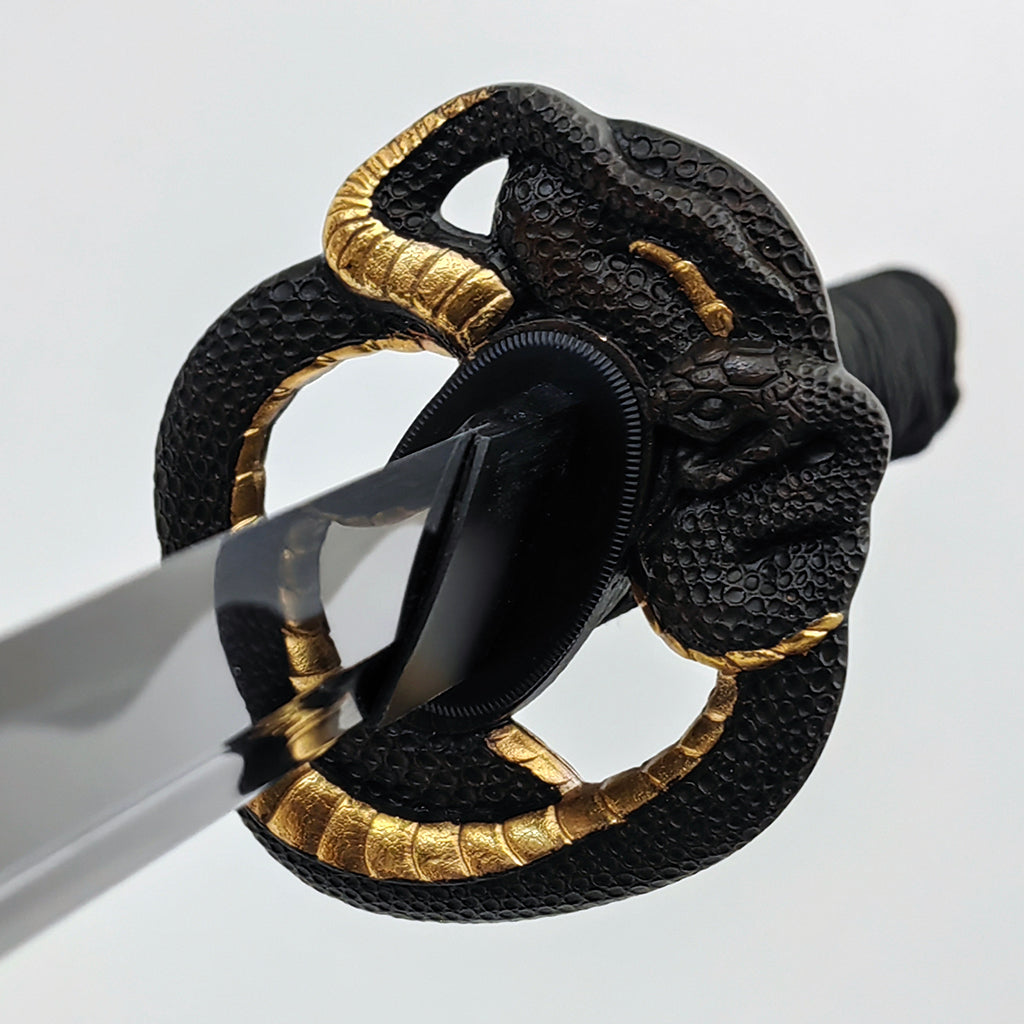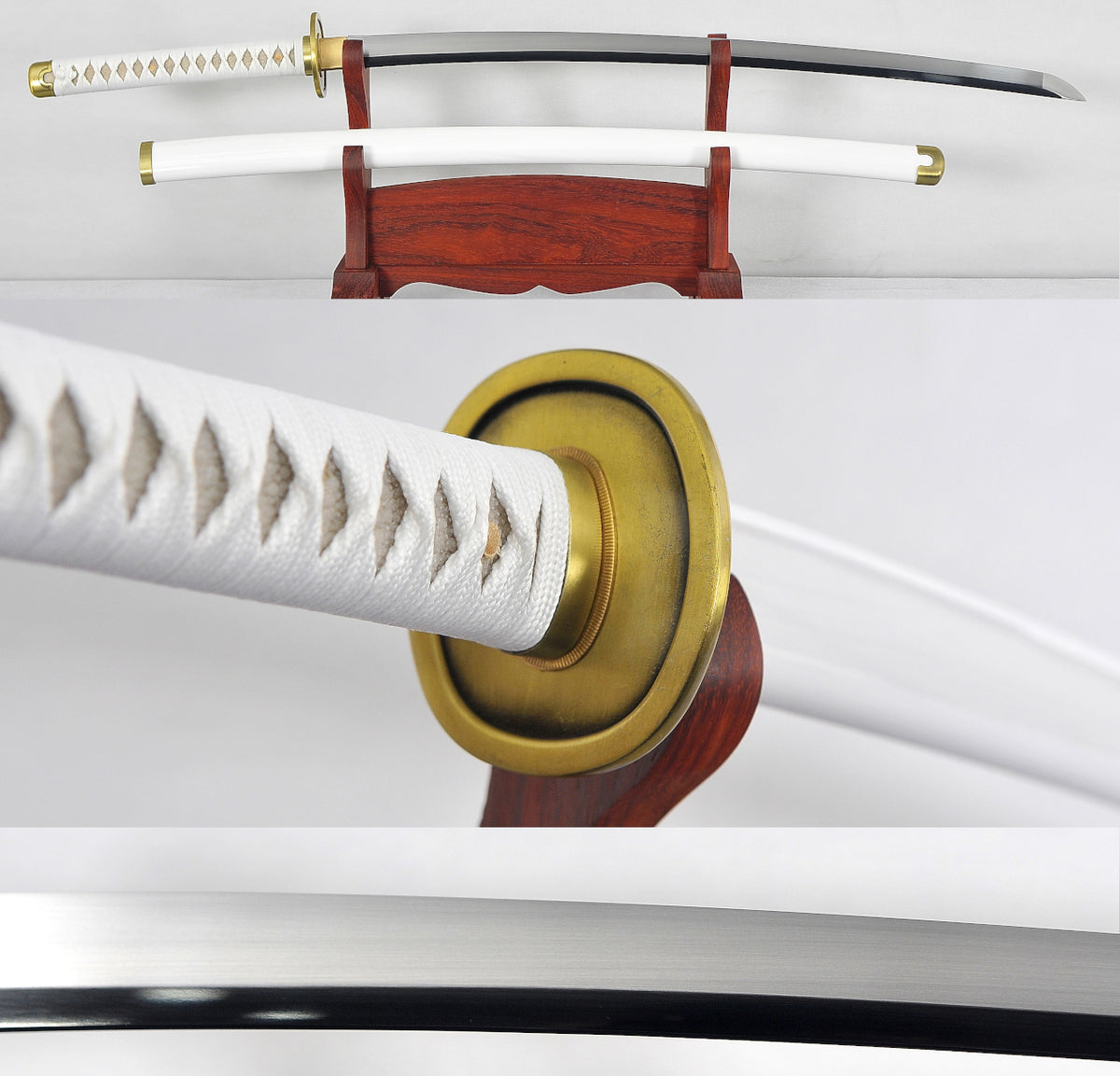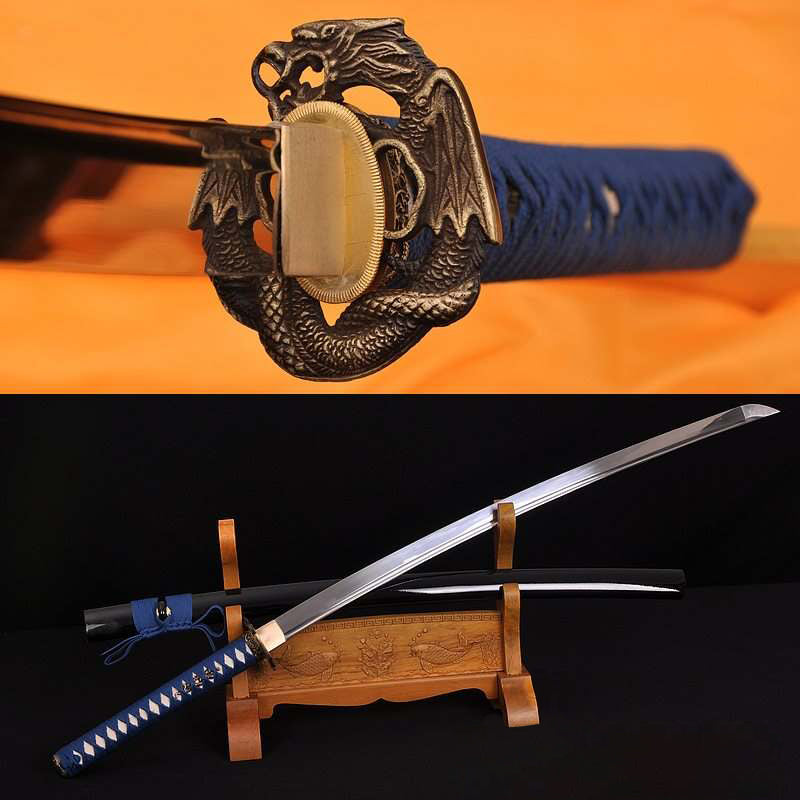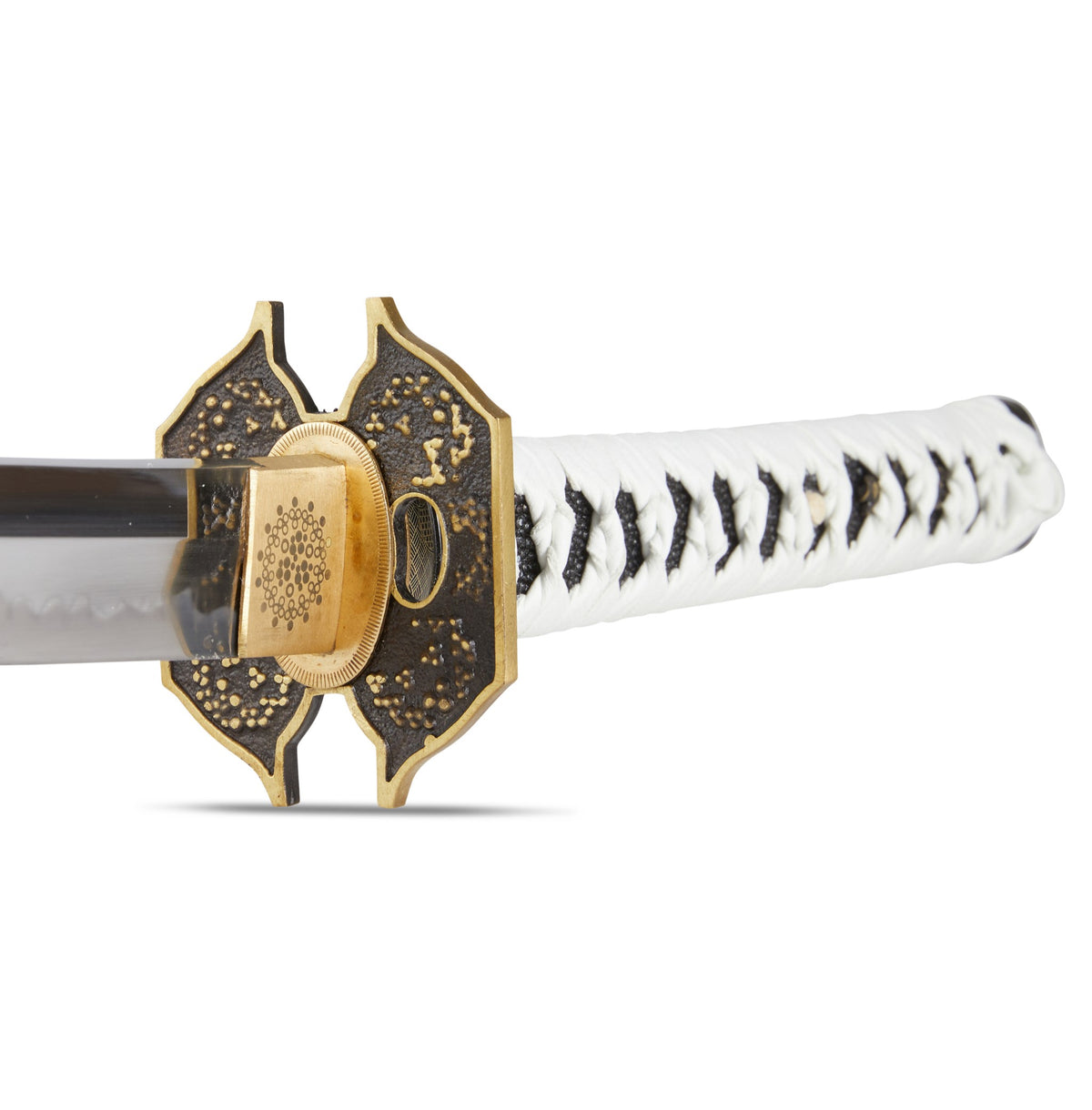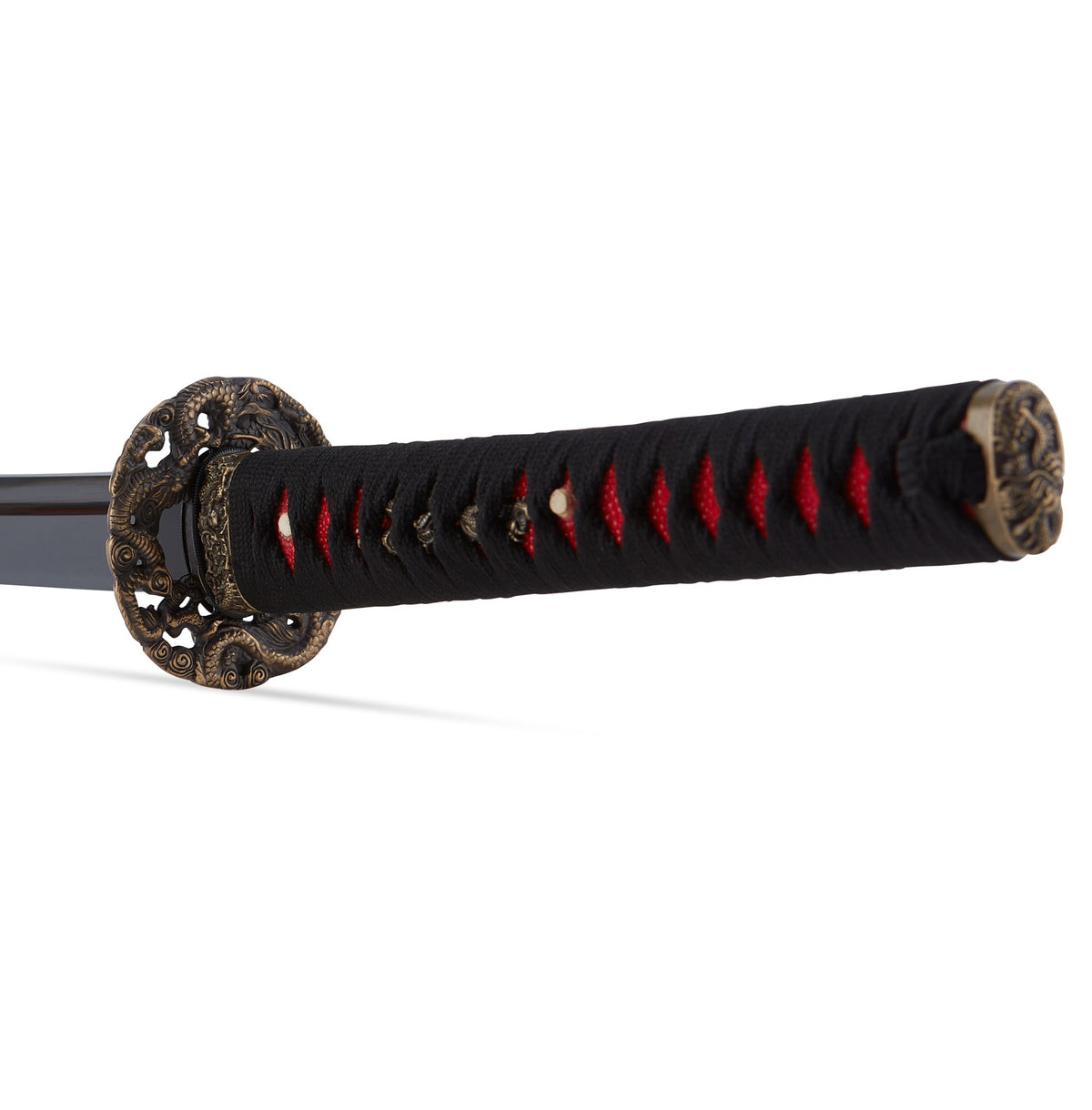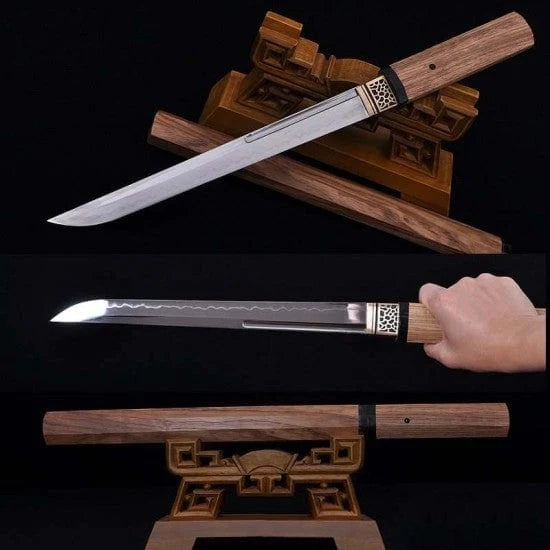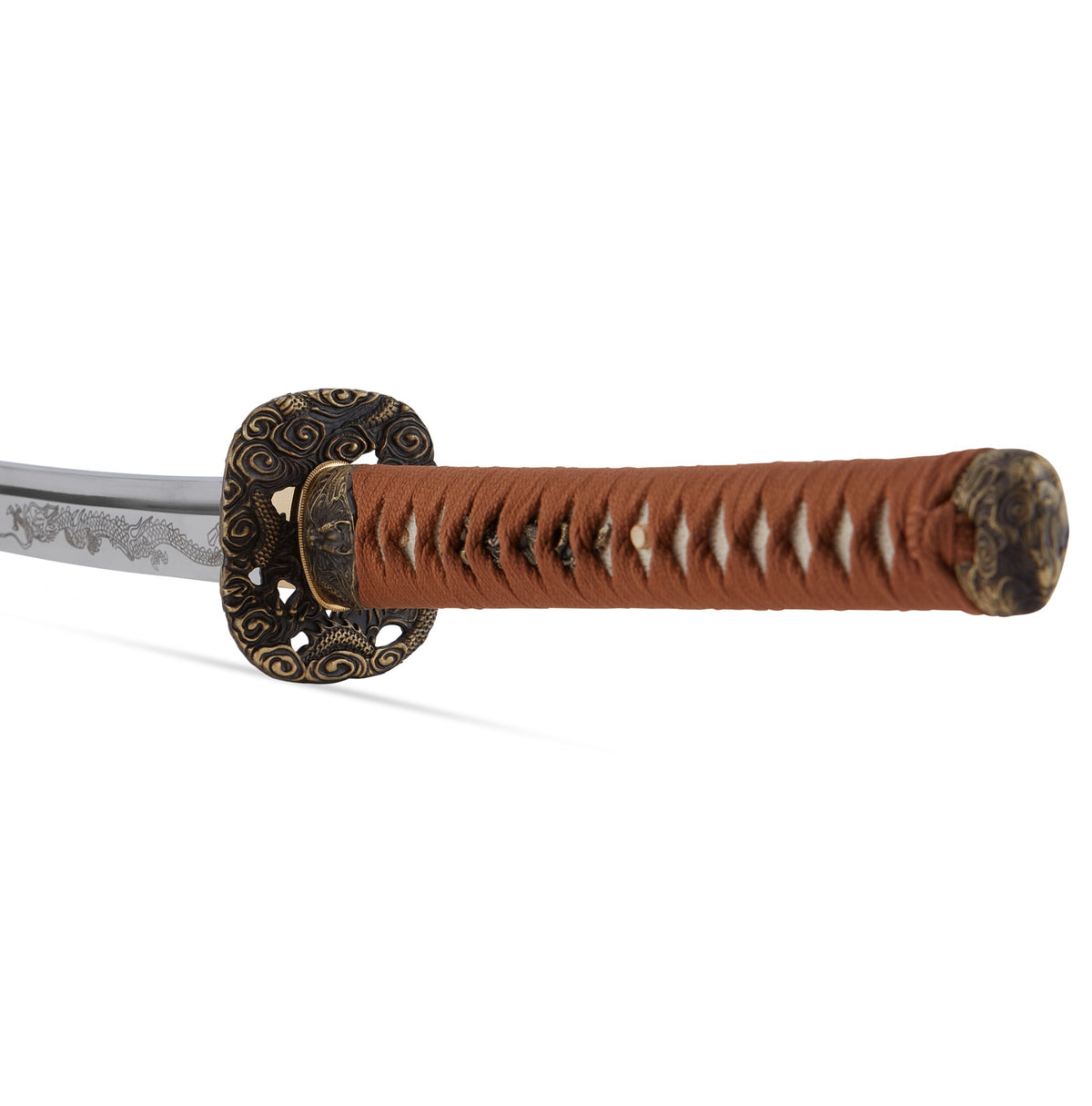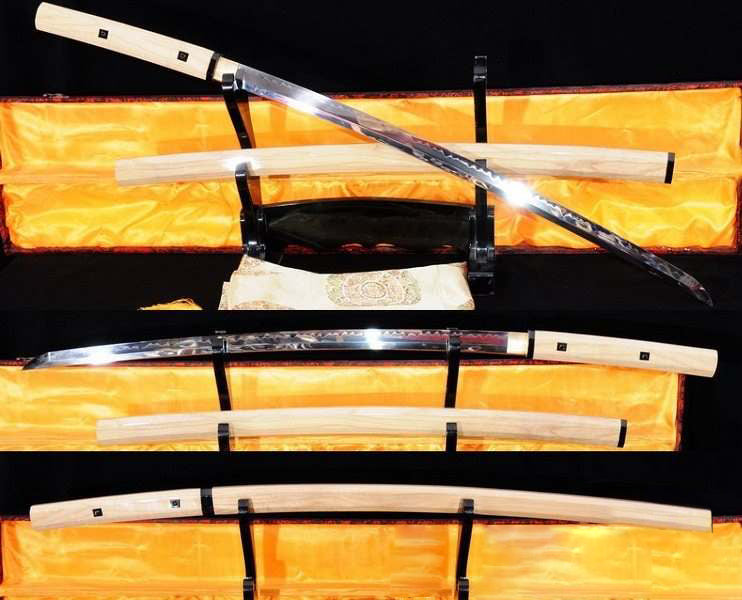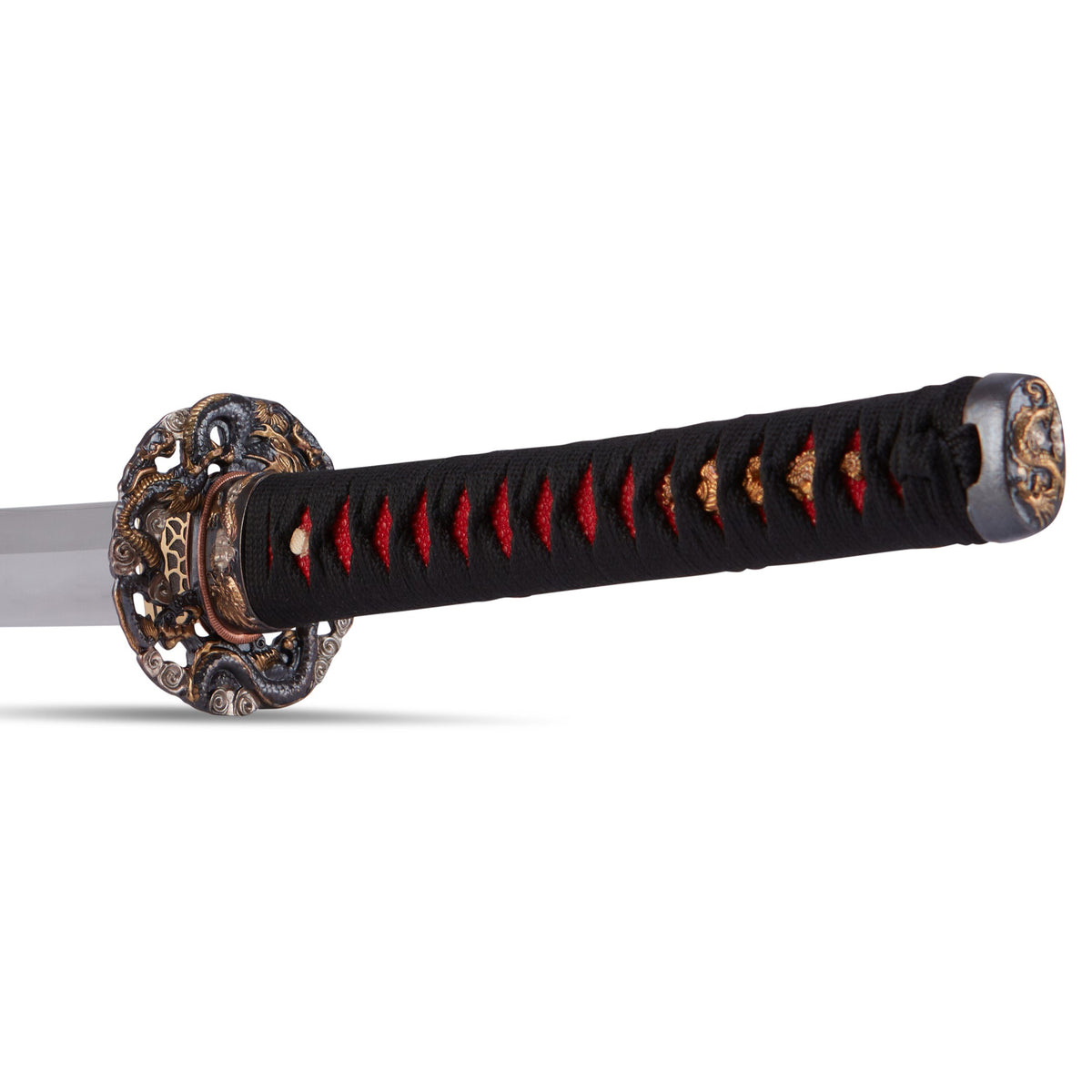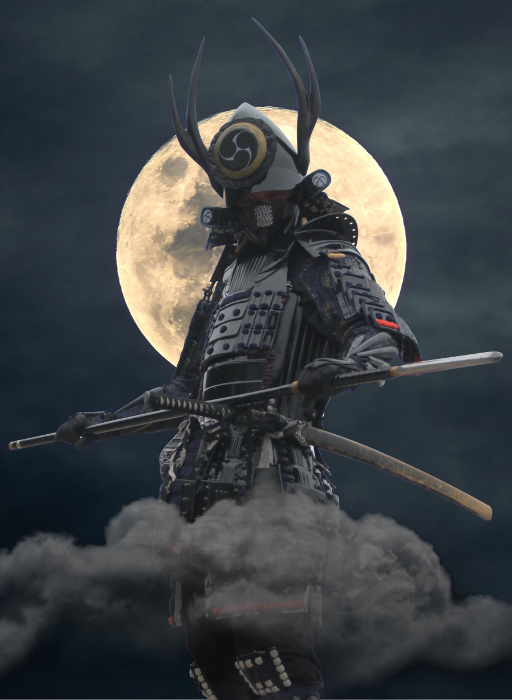The Legend of Miyamoto Musashi
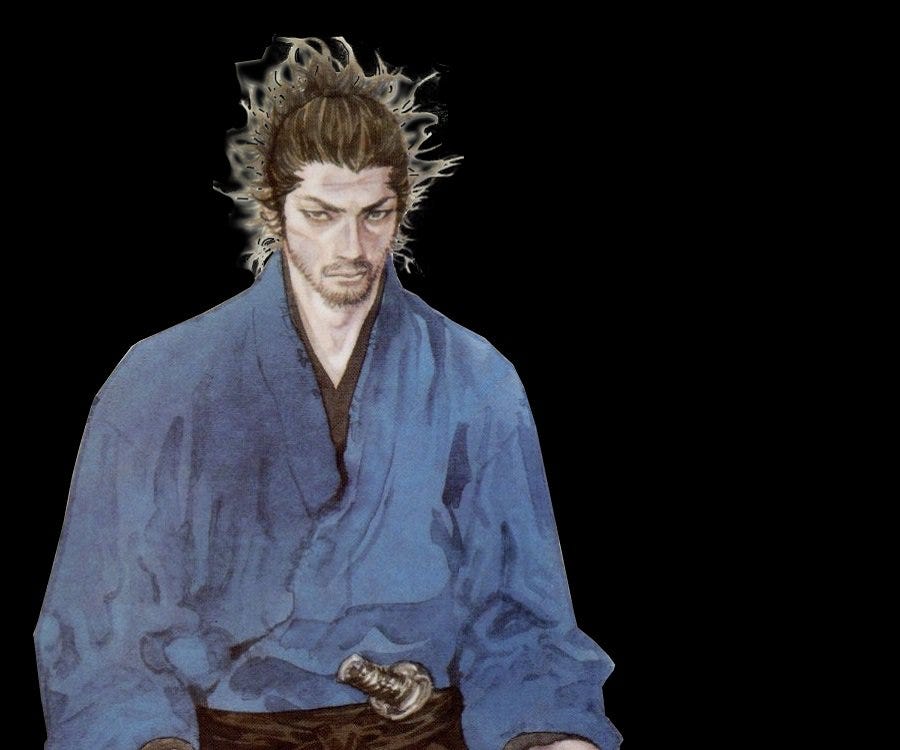
Miyamoto Musashi
The philosophy called Bushido, the way of the warrior, involved total devotion to a set of moral principles that demanded loyalty, devotion, and honor until death. One man personifies that spirit. “Every day when one's body and mind are at peace, one should meditate upon being ripped apart by arrows, rifles, spears and swords. Generally speaking, the way of the warrior is the resolute acceptance of death.” Those words are the beliefs of Japan’s legendary swordsman and warrior, a swordsman so skilled he was never beaten, a man who became one of the greatest swordsmen of all time, Miyamoto Musashi.
Miyamoto Musashi was born in 1584 to a samurai family. His father had his own dojo and was a master in the sword, jujitsu, and the proper use of armor. Musashi grew up surrounded by samurai, martial arts, and weapons, but his father was also an autocrat who disliked his son. He thought Musashi was arrogant and critical, and treated him badly.
At the age of 8, Miyamoto Musashi ran away from home and lived with an uncle. For the next 5 years he trained himself in martial arts and became a student of calligraphy and painting. When he was 13, Musashi’s life changed forever.
Arima Kihei was a swordsman who perfected his skills by wandering the provinces of Japan, engaging in combat. Almost nothing is known about Arima, except that he was a gambler. In 1596 he walked over the hill into Musashi’s village and issued a challenge. Musashi immediately saw an opportunity. At the age of 13, he was about to make his first kill.
A messenger came to Dorin’s temple, where Musashi was staying, to inform Musashi that his duel had been accepted by Arima. Dorin, Musashi’s uncle was shocked by this, and tried to beg off the duel in Musashi’s name, based on his nephew’s age. Arima was adamant that the only way his honor could be cleared was if Musashi apologized to him when the duel was scheduled. So when the time set for the duel arrived, Dorin began apologizing for Musashi, who merely charged at Arima with a six-foot quarterstaff, shouting a challenge to Arima. Arima attacked with a wakizashi, but Musashi threw him to the floor, and while Arima tried to get up, Musashi struck Arima between the eyes and then beat him to death with the staff. The killing of Arima was brutal, psychotic, devoid of any formal style or skill. It would take years of training to develop his technique.

Musashi at age 13 facing Arima Kihei
Musashi’s first kill may have been a brutal, raw talent but it established from the very beginning his overriding principle. ‘The purpose of any duel is to win, by any means.’ It was this freedom of attitude which allowed him to develop his own technique. After his first kill, Miyamoto Musashi climbed the Kamo slope and left the village of Miyomoto. He would never return. He embarked on the homeless, ascetic life of the shugyosha, a swordsman in training who traveled the land looking for fights and battles; the first stage in becoming a fully-fledged samurai. As he now walked on alone, large groups of warriors were gathering around the village of Sekigahara. 17-year-old Musashi was about to have his first experience of war.
For more than 150 years, Japan had engaged in bloody civil wars for the right to become shogun, ruler of Japan. In 1598, the powerful shogun Hideyoshi died, leaving Japan in the hands of his 5 year old infant son. In the struggle for power following his death, more than 160,000 soldiers converged on the small village of Sekigahara. The two armies facing each other were warlords from the south, and a smaller force brought to the field from the north, by a general who had risen through the ranks, Tokugawa Ieyasu.
17-year-old Musashi was still a shugyosha when he arrived here, a wondering swordsman in training, looking to become a samurai. Thousands of shugyosha flocked to the armies amassing on this plain. Their aim was to fight and get noticed by a lord, be offered a job, and be indentured as a samurai. Miyamoto Musashi was among them; the problem was, he was on the losing side. This was not because of any particular loyalties to the Hideyoshi family; the young Musashi was simply desperate to prove himself in the battle. Samurai often fought for causes which were not their own, they termed it ‘borrowing the battlefield’.

The Battle of Sekigahara
The records show Musashi distinguished himself in battle and survived. Quite how, no one knows. But from this point on, he went on the run. All the survivors who were wounded and still wearing armor were hunted down and killed. After the battle, Musashi was once again on his own. He had lost his gamble to become a fully-fledged samurai and nearly lost his life, but he had gained experience in a protracted battle. He would think about this experience for the rest of his life, and would record many of those thoughts in his most famous work, The Book of Five Rings.
For the next four years, Musashi wandered without money or armor, devoting himself to the discipline of the sword, rising at dawn and spending hour after hour perfecting his skills. He developed his unique 2-sword killing style, turning it into a martial art.
“To understand the way of the warrior, you have to understand that being a samurai means being a killing machine. Always grip your sword with the thought of killing. Wielding the longsword with both hands is not good on horseback, stony plains, or crowded places. Do not think dishonestly, the way is in training. Understand the harm and benefit in everything. Be careful even in small matters. Do nothing which is of no use.”
After four years on the road, and seclusion in the mountains, Miyamoto Musashi emerged from the wilderness a greatly skilled warrior. His self-discipline training must have been rigorous, because in 1604 at the age of 21, he walked out of obscurity into Kyoto and brought to ruin one of the most respected schools of swordsmanship of the time.

Village of Kyoto
Within a week of being in Kyoto, Musashi would fight two duels and survive an assassination attempt. In 1604 when he came to Kyoto, it was the old capital city and the spiritual heartland of Japan. In the last four years, Musashi had shut himself away, training and perfecting his two-sword technique. Now at the age of 21, he sought to become a famed warrior. He knew if he fought and defeated the masters of one of the best sword schools, his name would become known overnight. What happens next is extraordinary; Musashi shows real psychological insight.
The Yoshioka brothers run their own school of martial arts and were considered masters of the sword. Seijuro was the eldest and was renowned for his powers of concentration, powers which gave him the edge in any fight. Denshichiro was younger and hot-headed. When Musashi challenged them, the brothers dismissed him as a peasant. Musashi was unknown, but his father’s reputation as an expert swordsman made them honor-bound to accept. On the morning of the duel, Seijuro spent time in his garden fixing his vision, a meditation technique he used to focus his concentration. It was said that he could fix his vision on a single bird on a treetop, and as he did so, hundreds of birds would fly up to the treetop at once.
Seijuro was ready, but Musashi kept him waiting. Hours passed. This was a deliberate psychological tactic. “In my martial art, it is essential that you bend and warp your opponent, taking the victory by twisting and distorting your opponent’s mind.” When he finally showed up, Seijuro’s famous concentration was broken. They faced off, wielding bokutos, and Musashi struck a single blow, per their agreement. This blow struck Seijuro on his left shoulder, knocking him out, and crippling his left arm.
Denshichiro now challenged Musashi. This time the duel would be to the death. The following day, Musashi once again was late. Just enough so Denshichiro’s anger was out of control. Seconds after the beginning of the duel, Musashi hit Denshichiro with his wooden sword, killing him instantly with a single blow to the head. By beating the two brothers, the reputation of one of the most respected sword schools in Japan was in tatters at the hand of an unknown outlaw from a farming village.

Musashi vs Yoshioka Densichiro
But that was not the end of it. The remaining clan members requested another duel, but their intention was to assassinate Musashi. Musashi knew the challenge was a ruse, but he had no choice; his honor was at stake. He also knew his chances of survival were slim. He must have feared for his life because on his way to the duel, Musashi stopped to pray at a shrine.
On the way to his third Yoshioka duel, Musashi approached the shrine and was about to ring the bell, when he stopped. He had never relied on the gods before so why should he start now? This was a significant moment for Musashi. In the face of death, he decided he could only rely upon himself so he stepped back from the bell and thanked the god for his enlightenment. “Respect the gods and Buddhas, but do not rely on them”.
The clan members arrived in force. This time Musashi was early and hidden from sight. “It is harmful to do the same thing several times in the course of combat. You can do the same thing twice, but never three times.” A retinue of men arrived, armed with swords, bows, and muskets. The men were also hidden. They sent the lone clan leader to act as bait. When the time was right, Musashi charged the warrior and cut his head clean off. Surrounded by the men, he then drew his second sword, and with a sword in each hand, cut himself a path through his opponents before escaping into a nearby rice field. Musashi was without a scratch save for an arrow which pierced his sleeve. The surviving members of the Yoshioka clan were now totally disgraced.

Musashi's battle with the Yoshioka Clan
Not only does he demonstrate for the first time his unique two-sword technique, he reveals deep psychological insight, what we will term today as ‘psyching out your opponent’. He knew if he broke Seijuro’s famous concentration, he would win. He turned Denshichiro’s anger in on himself. And the assassination attempt was haltered by his two-sword technique.
“While facing superior numbers, the spirit is to chase the enemies around from side to side. Even though they come from all four directions, always quickly reassume your attitudes to both sides, cut the enemies down as they advance, crushing them in the direction from which they attack. Whatever you do, you must drive the enemy together, as if tying a line of fishes, and when they are piled up, cut them down strongly without giving them a chance.”
Musashi’s spiritual attitude to the sword was steeped in samurai tradition, but he also advocated the use of all weapons, crossing the land specifically to test his skill against anyone of note. In the next ten years following his duels in Kyoto, Musashi would fight more than 60 times, an average of a duel every two months.
In 1607, at the age of 24, Musashi went in search of a man known only by his family name, Shishido. Shishido was a skilled swordsman who was a master of the kusari-gama, a sickle with a chain and a weight attached to the end. Shishido wanted to end Musashi’s reputation as an invincible duelist.

Musashi vs Shishido Baiken
As soon as they faced off, Shishido began to spin his chain. Musashi regarded this technique with admiration. He immediately began looking for a tactic to defeat it, and in order to gauge the attack range of the weight, he switched his long sword to his left hand and drew his short sword with his right hand, assuming the gyaku nito guard position. He came forward twirling the short sword above his head. Shishido was stunned by this strange guard position. The small sword twirling above the head of his adversary made him uneasy. Musashi moved forward, whereas Shishido began to back away. The moment Shishido began backing up, Musashi threw his short sword, which stuck in his opponent’s chest, and at this moment he leaped forward and cut him down.
After defeating Shishido, Musashi went to the new capital of Edo in pursuit of anyone with a reputation. He fought many times but the list of opponents was dwindling. In 1612, at the age of 29, he came to Shimonoseki. He spent the last two years in Edo trying to set up fights, but because he was still regarded as an outlaw, he was barred from competing with the best swordsmen. So he went on the road again, itching for a fight, only to be forced out by bureaucracy. Any fight had to be officially sanctioned, which took time.
After two weeks of careful negotiations, it was finally agreed Musashi could make the challenge. The man he would come down to fight was the legendary demon of the western provinces, Sasaki Kojiro. Kojiro had attained great fame as a swordsman and Musashi knew that if he beat Kojiro, his own status as the greatest swordsman in Japan would be indisputable. When he arrived, Musashi petitioned Kojiro’s lord to request a comparison of techniques. This phrase seems innocent enough, but every swordsman knew the underlying message. The fight would end in death.
Kojiro personified the ideal swordsman. His lineage was impeccable and his teachers were well known. Through disciplined training, he had created his own style. He had won many duels, and approval of the highly respect Hosokawa clan who allowed him to establish a sword school. Musashi was entirely different. He had appeared from nowhere, claimed no teacher, no school, no lineage. Despite his reputation, he was still regarded as a dangerous loner.
The duel was set to take place first thing the next morning on Ganryū Island, a small piece of land a mile and a half from shore. But when the sun rose, Musashi was still in bed. A boy was sent to wake him. Musashi got dressed and ate a full breakfast without rushing. He then casually made the journey by boat to the island. He knew full well that he was late and that his opponent would have spent four hours waiting for him. This was his master stroke. It was exactly the same tactic he had used against the Yoshioka brothers but this time he took it a stage further. To give himself an extra edge, Musashi carved a wooden sword from an oar.

Musashi fighting Sasaki Kojiro with a carved wood oar
For Musashi to show up late without a sword, carrying just a lump of wood, showed no respect. Kojiro entered the water, anger in his heart; he drew his katana and threw away his scabbard. Musashi saw this gesture and said to his opponent “If you have no more use for your sheath, you are already dead”. Kojiro was famed for using a long sword and was counting on this advantage when he made his first strike. Musashi had carved his oar just a few inches longer. This was his edge. Musashi provoked Kojiro into making the first attack, and then countered quickly, breaking Kojiro’s left ribs and puncturing his lungs, thus killing him.
Musashi had defeated the demon of the western provinces. Kojiro was an expert in longsword fighting, a skill that had rarely seen him lose, but by fashioning a weapon just a few inches longer than Kojiro’s sword, Musashi had removed his key advantage and made it his own. Of all the combats in his youth, this is the one that marked him most. It was if he had killed the mirror image of himself.
Up until this point, each duel Musashi had engaged in had taught him something new. From the first psychotic kill, fighting and surviving the chaos of battle, four years of intense training in the wilderness, the psychology of the Yoshioka duels, and the hunting down and challenging of any master of any weapon, each duel had purpose in the strategy to perfect his technique.
For many ways, Kojiro was the last in line, but the one closest to himself, and the one that affected him most. From this point there would be fewer personal matches, and much more of a deeper ascetic discipline that would refine his art. The duel with Kojiro marked the end of his first stage as an adept. He would turn experience into a principle on the use of weapons.
“You should not have any special fondness for a particular weapon. Too much of the same is not enough. Learn to use anything at hand. Pragmatic thinking is essential.”
Miyamoto Musashi fought in six major battles and always stresses techniques were the same for one as they were for many. Never was this more true than in a battle that would have the most profound effect on Musashi, the field of Osaka.

The Siege of Osaka
More than 400,000 samurai were on the field, and the castle of Osaka was the target. This time Musashi was fighting for Tokugawa and was on the winning side. It was one of the most bloodthirsty battles in Japanese history, with Tokugawa eventually executing the leading generals of the opposition and beheading the 8 year old son of the leader. All along the road, thousands of heads of Ronin were displayed on poles for miles between Osaka and Kyoto. Maybe witnessing such a bloodbath changed Musashi. Whatever the cause, he began to mellow as a man.
Musashi had survived 6 battles and more than 60 duels in an age when most warriors expected to die by the age of 25. He began to consider, maybe there was a reason. From this point on, he never killed again. After Osaka, peace finally came to Japan.
Tokugawa was now the undisputed shogun. He declared the land closed, and sealed off the country from the outside world. All Christians were hunted down and killed. Foreign religions, guns, and ideas were banned. Foreign sailors, shipwrecked on their shores were tortured and beheaded. This new era would last 250 years. Generation after generation of samurai would now live and die without knowing war.
Musashi’s combats during the years of maturity were now governed by a different principle. He now fought his duels by dominating adversaries without striking a single blow. This change of purpose coincided with the transformation of the lifestyle of the Japanese warrior. The fierce but educated samurai now served as administrators, and their skills in warfare became ritualized within the study of martial arts.
Musashi’s life up to this point had been a series of journeys and adventures. Now, he was looking for the stability that would allow him to establish a school in a lasting fashion, and the peace of mind to meditate and write. He would find it in a cave in a Buddhist retreat, halfway up a mountain where he would write his famous work, The Book of Five Rings, a book that would seal his place in history.
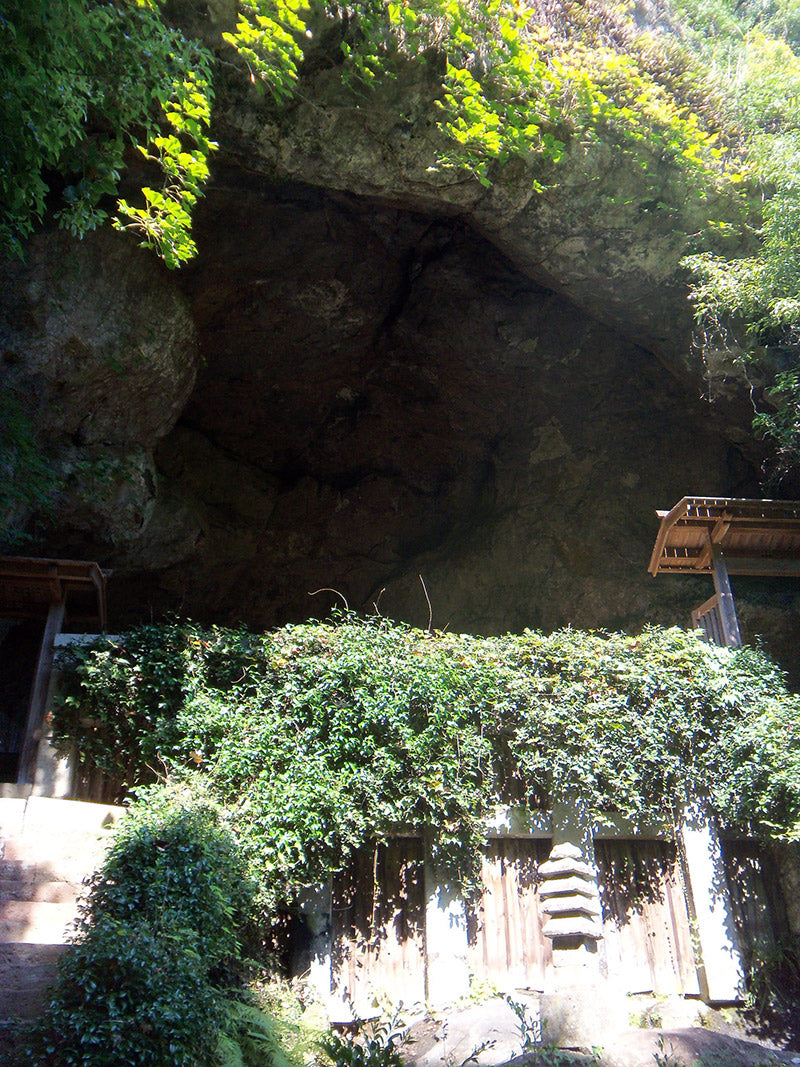
Reigando Cave
In 1640, at the age of 57, Musashi accepted an offer from the Hosokawa clan, inviting him to come and stay as a guest in Kumamoto. It was his last great adventure. He now had disciples and would spend his time teaching, painting, meditating, and writing poetry. His last retreat was the Reigando cave at the foot of Mt. Kinpo. Musashi would spend most of his time here during his final years. He often used Reigando cave to practice Zazen and meditate. It was just outside of Kumamoto city and would have been quiet, giving him the time and space to focus on his final works.
Seeking true meaning, Musashi spent his last years in contemplation at a Buddhist retreat. It was here Musashi wrote The Book of Five Rings. By the time Musashi came here, he had a cancer in his stomach. He must have known he didn’t have much longer to live. He had been an artist all his life, but writing this book would seal his place in history.
In The Book of Five Rings, Musashi reflects on his life, and turns every experience into a philosophical statement. His five chapters lay out the samurai’s task in life.
Earth - Ground yourself in finding the true way
Water - Hone individual skills to perfection
Fire - Take the battle to your enemies without fear
Wind - Study the ways of your competitors
and the Void. The Void is the last chapter and the most difficult to achieve. He wrote this after he wrote the first four chapters because in order to achieve enlightenment without trying, you have to forget everything you know, and just be. “By void, I mean that which has no beginning and no end. It expressly deals with that which cannot be seen. By knowing things that exist, you can know that which does not exist."
The paradox of Musashi’s life is that by facing death on the battlefield, and by perfecting his sword technique, he was able to transcend all earthly fear and find peace, enlightenment by the art of the sword. This enlightenment is what makes Musashi an atypical warrior and separates him from the rest.

Musashi Miyamoto
By 1645, Musashi had been in the cave for almost two years, meditating and writing. By early spring, he could barely get up the hill. His disciples had to eventually carry him back down the mountain. In his moment of death, Musashi pulled himself up on to one knee, straightened his back, and took hold of his sword. He died in this position. He was 62. His body was dressed in full battle armor and helmet, and buried standing up as a samurai warrior.
A week before his death, Musashi picked up the brush for the last time and wrote the way of walking alone. It consists of 21 maxims which read as an outline of Musashi’s life, both historical and spiritual. “Do not turn your back on the various ways of this world. Do not scheme for physical pleasure. Do not intend to rely on anything. Consider yourself lightly; consider the world deeply. Do not ever think in acquisitive terms. Do not regret things about your own personal life. Do no lament parting on any road whatsoever. Though you give up your life, do not give up your honor.”
The Book of Five Rings is an enduring guide to enlightenment which enriches all aspects of life and provides the tools and wisdom necessary for success in any human endeavor. It would be another 300 years before it would have its real impact, and in that time, the samurai world Musashi knew, would disappear forever.
The end of the samurai came on July, 1853. After 250 years of closed borders, a fleet of US Navy ships sailed into Tokyo harbor and delivered an ultimatum. Open Japan up to trade, or the city will be bombarded. The samurai were hopeless against modern ships and guns. Faced with western domination, the samurai knew that Japan would have to modernize as quickly as possible. The old feudalism disappeared, and social distinctions abolished. The grandeur of the samurai suddenly belonged in another age. Traditional dress was discarded, ancient privileges surrendered, the wearing of swords banned.
It would take another 50 years before the Musashi legend and The Book of Five Rings would be rediscovered. Since his death in 1645, it’s taken 300 years for his life and teachings to be rediscovered. The Musashi legend would have disappeared had it not been for a man named Eiji Yoshikawa. In 1935, he published a serialization of Musashi’s life. The depiction of Musashi as an invincible, conquering warrior suddenly caught the imagination of the Japanese public, just in time for war.

Japanese forces marching on Nomonhan
In 1937, Japan attacked China and embarked on its conquest of the east. The military establishment appropriated the bushido cult. The old values of absolute loyalty and honor until death were resurrected. The Japanese film industry turned out samurai films during the war. In 1942, the Japanese navy commissioned a massive new battleship and named it the Musashi. It was so important to the fleet that Emperor Hirohito visited it. Once again the sword was raised in battle, not as a weapon, but a symbol connecting the modern soldier to his noble past.
The old samurai rituals of drinking sake and military ceremony on the eve of battle returned, reinforcing loyalty and bonding the soldiers in death. Many Japanese were captured, but many, like the samurai, chose death and took their own lives. In 1943, suicide had become a form of combat. Inspired by patriotism and samurai ideal, they were called Kamikaze, pilots of the divine wind. Their mission was to attack, not with bombs, but with themselves, deliberately crashing their planes into American ships.
The final sacrifice came in August 1945, when the A-bomb was dropped on Hiroshima. 140,000 people were killed. 3 days later, 80,000 died in Nagasaki. Japan surrendered, and the Pacific War was over. After the war, Japanese corporations took to the values of Musashi in the samurai way. The Book of Five Rings became the business bible for an emerging economic superpower.
Executives revered Musashi; they practiced kendo every morning at 6:30 am, using his philosophy as a guide for their daily decisions, managing their businesses like a military operation. The book’s strategies can be applied wherever there is conflict and competition.
Miyamoto Musashi spent his life perfecting his fighting skills only to find enlightenment in not having to use them. It’s the perfect distillation of any art, reducing everything to its essense, its most perfect form.
Best Sellers
- Regular Price
- from $199.99
- Sale Price
- from $199.99
- Regular Price
-
- Unit Price
- per
- Regular Price
- from $299.00
- Sale Price
- from $299.00
- Regular Price
-
- Unit Price
- per
- Regular Price
- from $199.00
- Sale Price
- from $199.00
- Regular Price
-
$0.00
- Unit Price
- per
- Regular Price
- from $619.00
- Sale Price
- from $619.00
- Regular Price
-
- Unit Price
- per
- Regular Price
- from $319.00
- Sale Price
- from $319.00
- Regular Price
-
- Unit Price
- per
- Regular Price
- from $249.00
- Sale Price
- from $249.00
- Regular Price
-
- Unit Price
- per
- Regular Price
- from $339.00
- Sale Price
- from $339.00
- Regular Price
-
- Unit Price
- per
- Regular Price
- from $219.00
- Sale Price
- from $219.00
- Regular Price
-
- Unit Price
- per
- Regular Price
- from $364.00
- Sale Price
- from $364.00
- Regular Price
-
- Unit Price
- per
- Regular Price
- from $519.00
- Sale Price
- from $519.00
- Regular Price
-
- Unit Price
- per
